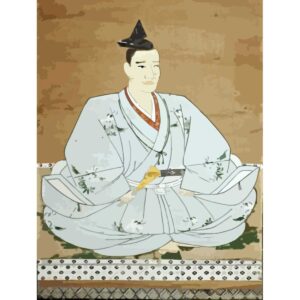
Tea master, born in 1544. He called himself Hyouan. A native of Sakai, he lived under the name Satsumaya. A disciple of Rikyu for 20 years, he inherited the greatness of Kotsubo. He also possessed an ink-jet of the famous Kodo, which reads, “Otogozen, kama, kama, this kama was given to Soji Yamakami by Lord Nobunaga and presented to the Sekihaku-sama” (Yamakami Soji Ki), and he had a reputation for tea from early on. He was often a wandering samurai, and later became a guest of the Hojo clan in Odawara, Sagami Province (Kanagawa Prefecture). Soji’s son Michihichi was adopted by Iseya Michikazu and served Ieyasu with tea, but later fled to Iyo Province (Ehime Prefecture) to become a guest of Todo Takatora, much to his anger.
Yamakami Souji Ki: A book of Yamakami Souji’s secrets. The first volume was addressed to Itabuoka Yukinari and Esessai, the chief vassals of the Hojo clan, in February 1589, the second to Minagawa Yamashiro, also of the Hojo clan, in March 1590, and the third to Kuwayama Repair in 1588, which was included in “Shoku Gunsho Ruishu” as “Chakki Meimono Shu” (A Collection of Tea Utensils and Meibutsu). This book is a first-rate document in the history of chanoyu as a record of Rikyu’s direct transmission, and was composed by adding the Shaoogu Rikyu biography to the Shuko Isshi Mokuroku, or “Shuko Isshi Mokuroku,” which is said to have been written in Shuko’s style, allowing us to learn in detail what the tea tradition and specialties of the day were like. The contents of the book include the details of the tea ceremony and its holders, such as the details of the large vase, the tenmoku, the tea bowl, the famous kettle, the famous suisashi (water pitcher), the stone bowl, the incense container with incense, the ten-ei incense and six additional types, the incense burner ash, the ink painting, the go-kake-e flower vase, the eggplant, the four daisies, the fire line, the four-piece tray, the shelf with one bag, and the wabi-kajo (flower container). In addition, it describes the biographies of tea masters of the day, their tools, the tea rooms of Shaozu and others, and the timber used for the tea ceremony, as well as the ten or so tea masters who were prepared for the tea ceremony.
This is a valuable document.



